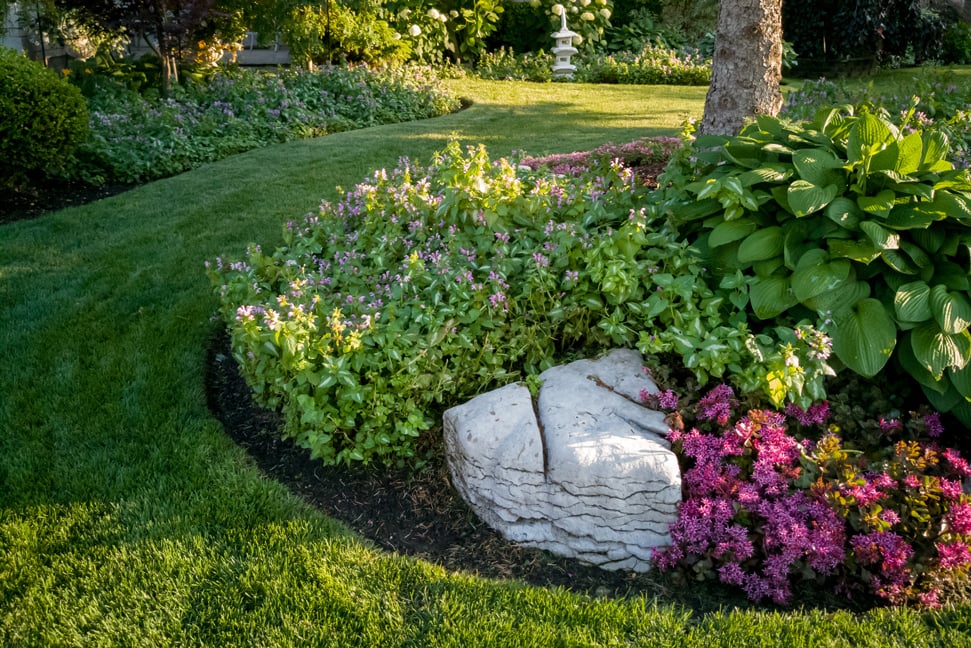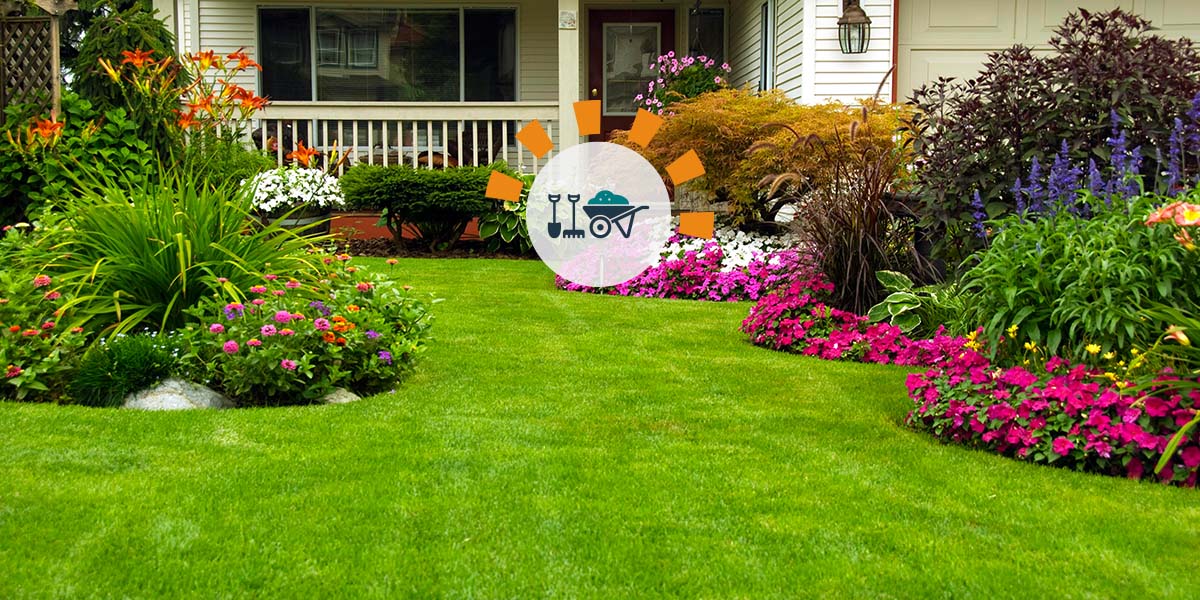Discover Different Kinds Of Landscaping That Can Change Your Exterior Space
Landscape design serves as an important aspect in enhancing outdoor rooms, using various styles that provide to visual and functional demands. Furthermore, sustainable practices and outdoor living rooms add to both environmental stewardship and lifestyle enhancement.
Typical Yard Landscaping
Conventional garden landscape design symbolizes timeless elegance and a feeling of order, commonly defined by symmetrical layouts and traditional plant selections. This design normally highlights organized designs, including geometric patterns and carefully polished hedges that create an unified visual equilibrium (Commercial Landscaping). Pathways and paths, commonly lined with stone or block, guide site visitors through the yard, enhancing the total aesthetic

Water attributes, such as water fountains or decorative fish ponds, play a significant role in traditional landscaping, offering a peaceful prime focus and enhancing the sensory experience. Additionally, classic garden ornaments, consisting of containers and sculptures, add to the improved environment.
Eventually, conventional garden landscape design is a party of nature's elegance via a well-ordered, visually pleasing style, inviting relaxation and reflection while recognizing historical gardening practices. This strategy develops an inviting outdoor room that mirrors both style and elegance.
Modern Hardscape Designs
Modern hardscape develops mark a departure from the structured visual appeal of conventional landscape design, concentrating instead on innovative products and clean lines. This modern technique emphasizes making use of difficult materials such as metal, concrete, and rock to produce functional and aesthetically striking outside rooms.
Integrating elements like patio areas, pathways, and preserving walls, modern hardscape styles boost the functionality of outdoor areas while keeping a minimalist visual. Unbalanced layouts and geometric shapes are preferred, permitting distinct arrangements that reflect individual style. The assimilation of lighting functions, such as LED strips and limelights, boosts the ambiance and security of these rooms, developing an inviting environment throughout the night.
Innovative materials such as permeable pavers are obtaining grip, offering both toughness and environmental benefits by enabling water to drain through the surface area. This not just lowers runoff but likewise assists keep a much healthier landscape.
Lasting Landscaping Practices
Incorporating sustainable landscaping methods is crucial for creating eco-friendly outdoor areas that grow over time. These practices not only enhance the aesthetic appeal of a landscape but also contribute to ecological balance and conservation.
One of the primary tenets of lasting landscape design is using indigenous plants. These varieties are adapted to the neighborhood environment and dirt problems, needing less water and maintenance other compared to non-native varieties. Additionally, implementing xeriscaping strategies can significantly reduce water use by making landscapes that are drought-resistant.
An additional important element is making use of organic horticulture approaches, which include avoiding synthetic plant foods and chemicals. Instead, all-natural choices such as compost and integrated parasite administration can assist maintain dirt health and wellness and minimize chemical runoff.
Furthermore, integrating rainfall yards and permeable paving can assist in stormwater administration, permitting rain to penetrate the ground instead than adding to runoff. This not only decreases erosion yet also renews groundwater materials.
Last but not least, making use of recycled materials in hardscaping and advertising biodiversity with pollinator yards can create an environment for regional wild animals, promoting a harmonious partnership between nature and outside spaces. By accepting these lasting techniques, home owners can develop gorgeous landscapes that support both the atmosphere and their individual pleasure.
Outdoor Living Spaces
Developing a welcoming exterior space matches sustainable landscape design initiatives by giving practical areas for relaxation and entertainment while boosting the general elegance of the landscape. These areas can range from easy patios to elaborate exterior kitchen areas, each developed to balance with the natural environments.

Incorporating components such as fire pits or exterior fire places not only expands functionality right into cooler months but additionally works as a focal point for events. Landscapers Las Vegas. Additionally, integrating native plants and ornamental landscape design attributes, such as water elements or stone paths, can perfectly mix these rooms with the existing setting
Reliable lighting is vital for improving atmosphere and safety and security throughout night usage. By thoughtfully developing i loved this exterior space, house owners can create multifunctional areas that advertise exterior pleasure while sustaining sustainable practices and preserving the integrity of the surrounding ecological community.
Vertical and Roof Gardens
Upright and rooftop yards stand for innovative services for making best use of minimal room while enhancing the aesthetic and eco-friendly value of metropolitan settings. These garden kinds make use of his explanation upright surface areas and rooftops to grow a variety of plants, transforming otherwise underutilized locations right into vivid eco-friendly rooms.
Vertical gardens, typically described as living wall surfaces, use specialized structures to sustain vegetation, enabling creative styles that can include herbs, flowers, and also tiny bushes. This approach not just includes visual passion but likewise boosts air high quality and lowers metropolitan warmth effects.
Rooftop gardens, on the other hand, give a distinct chance to produce a lavish environment atop buildings, providing benefits such as boosted insulation, stormwater monitoring, and increased biodiversity. They can function as recreational areas, neighborhood gardens, or city farms, promoting lasting techniques in densely booming areas.
Both upright and rooftop yards need cautious preparation and upkeep, consisting of considerations for weight irrigation, plant, and lots option. When carried out thoughtfully, they can substantially enhance metropolitan landscapes, making cities much more habitable, lasting, and visually pleasing. Welcoming these horticulture approaches can bring about a greener, healthier future for urban dwellers.
Final Thought
In final thought, discovering varied landscaping kinds can dramatically enhance exterior spaces, supplying both aesthetic allure and capability. Sustainable techniques add to ecological conservation, and exterior living rooms foster leisure and social communication.
Landscaping serves as an essential element in improving exterior rooms, offering numerous designs that provide to visual and useful requirements. Additionally, lasting techniques and outdoor living spaces contribute to both ecological stewardship and way of life enhancement.In final thought, checking out diverse landscape design types can dramatically improve outdoor rooms, offering both visual appeal and capability. Sustainable practices add to environmental preservation, and outside living areas foster leisure and social interaction. Furthermore, vertical and rooftop yards resolve city room constraints, promoting plant in densely inhabited areas.